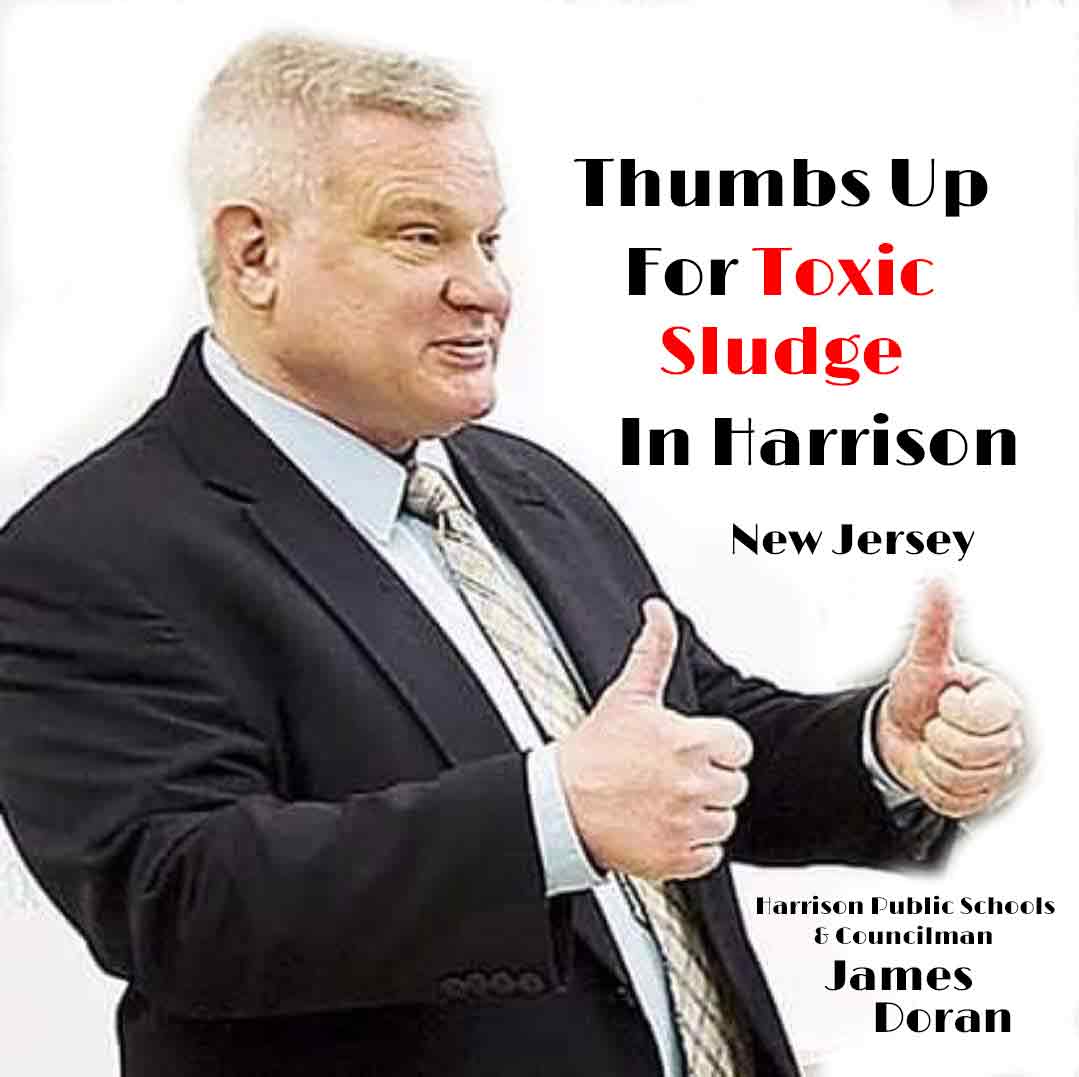EPA Pushes Outdated Passaic River Plan —Tell Them No Monday 11/17/2025
Oct 27, 2025
The U.S. Environmental Protection Agency (EPA) will hold an in-person Community Advisory Group (CAG) meeting on Monday, November 17, 2025, at the Ironbound Early Learning Center, located at 1 New York Avenue in Newark, New Jersey, from 6 p.m. to 8 p.m. The meeting will also be broadcast via Zoom; it remains unclear whether virtual attendees will be allowed to ask questions directly or be limited to using Zoom’s chat feature.
Anticipation is high, especially among residents of Harrison, NJ, and Newark’s Ironbound section, who plan to turn out in force to oppose what they call a deeply flawed EPA cleanup plan for the Lower Passaic River and Diamond Alkali Superfund Site. For many in these environmental justice communities, this meeting is more than a procedural update — it’s a last stand against a toxic mistake that goes against the EPA’s mission statement. Toxic Dioxin sludge is being brought onto land in a residential community that is no longer contaminated and is within one mile of a vibrant residential community in the Ironbound Section of Newark.
A Cleanup Plan That Threatens Clean Communities
The EPA’s cleanup proposal, originally developed over 30 years ago, is being criticized as outdated, very non-specific on construction plans, and dangerously misplaced.
While the plan was once meant to address an abandoned industrial corridor, the landscape has completely changed. The once-polluted south end of Harrison has become a vibrant, mixed-use neighborhood filled with apartments, restaurants, and hotels. Yet, the EPA still plans to place an open-air sludge dewatering and cement-mixing facility on a remediated PSE&G site between the Jackson Street Bridge and the new Harrison PATH station, land that underwent a $367–$400 million cleanup and was promised to residents as part of Harrison’s post-industrial renewal.
The proposed facility would handle dioxin-contaminated sediment dredged from the Passaic River — mixing the toxic material with Portland cement to stabilize it before trucking it to unspecified landfills.
Residents and environmental experts warn that dioxin, a byproduct of Agent Orange, can become airborne in microscopic particles and poses serious cancer and reproductive health risks.
Despite EPA assurances of air-monitoring systems and odor controls, Harrison residents view the plan as a betrayal of trust. “EPA’s mission is to protect human health and the environment — but this plan endangers both,” said one resident who plans to attend the meeting. “You don’t build a toxic processing plant in the middle of a residential town.” One EPA meeting attendee has asked on several occasions, “Where else in the United States of America has the EPA placed a Toxic Sludge Plant in a residential community?” EPA, despite having ample opportunity to draft up a response, continues NOT to be able to state a location and uses one small project conducted in the Ironbound Section of Newark along the Passaic River that is not residential. That project did have an exceedance, which was detected. Not a great example since the Harrison, NJ proposed Toxic Sludge plant is across the street from residential apartment buildings.
The Lister Avenue Staging Site: A Recipe for Disaster
Equally controversial is the EPA’s intent to use the Lister Avenue Superfund site in Newark — the notorious former Diamond Alkali chemical plant — as a construction staging area for heavy machinery.
The EPA previously declared the site too toxic to disturb, permanently capping it to contain dioxins and other cancer-causing chemicals. Decades later, the EPA has no technology that would safely remove the cocktail of cancer-causing chemicals still at the Lister Avenue Superfund site. How is it a good idea to use the site as a construction staging area, risking a compromise of the cap?
Yet, according to CAG discussions earlier this year, EPA staff gave conflicting statements about whether heavy construction equipment would be placed directly on top of the cap. One EPA representative claimed it would not; another contradicted that statement, saying the cap would indeed be used, but “monitored for cracks and weight stress” would be implemented.
Such contradictions have fueled fears that the EPA is ignoring its own safety warnings. “That cap holds back some of the most toxic material in the country,” a resident said. “You don’t test its limits with heavy equipment and materials. It is such a terrible idea, you wonder what EPA personnel have been exposed to, to suggest such a dangerous use of Lister Avenue.”
Community Outrage and Political Betrayal
The Harrison community’s opposition has been amplified by deep frustration with local leadership. Residents are angry at Mayor James Fife and Councilman and PVSC Commissioner James Doran, both of whom have expressed support for the EPA’s project. According to community activists, Fife and Doran misled the public three years ago, claiming that the toxic sludge facility “was not coming to Harrison.”

“They lied to us then, and now the truth is out,” said one Harrison resident preparing remarks for the CAG meeting. “They defamed the people who warned us, wasting three years that could have been used fighting this plan.”
Their support for the EPA project has baffled many. “Fife and Doran know this plan is terrible,” another resident said. “They’re choosing politics over public health. They boldly lied in person and in writing to the residents. They knew of EPA's plan all along.”
Better Options Exist — If EPA Chooses to Listen
Critics aren’t calling to stop the cleanup of the Passaic River. They’re calling for a better plan, one that places cleanup facilities in industrial zones, not next to residential apartments and businesses.
The most frequently cited alternative is South Kearny, an industrial district with no residential population, wide buffer zones, and direct access to the New Jersey Turnpike and freight rail lines.
“EPA has choices,” said a business owner.. “They can protect the public and still clean the river — but not if they insist on turning in Harrison a modern neighborhood back into toxic zones.”
A Reckoning for the EPA’s Mission
The EPA acknowledges that, under current conditions, the toxic dioxin sediment at the bottom of the Passaic River poses no immediate risk to the public unless people eat contaminated fish or crabs.
Yet, by bringing dioxin-laden material onto land and processing it in the open air, the agency risks creating new cancer-causing exposures that do not exist today.
The PSE&G site once represented Harrison’s rebirth — a remediated property intended for green space, a community center, and a PATH Station Drop Off & Turn around. Turning it into a Toxic Sludge Dewatering Plant would be a cruel reversal of nearly three decades of progress. A contaminated industrial zone in Harrison was cleaned up and transformed into a residential community envisioned by the late Harrison Mayor Raymond J. McDonough almost three decades ago.
Residents say it’s time for the EPA to reboot its cleanup strategy — not abandon it, but realign it with modern science and the principles of environmental justice.
As one activist wrote in a public forum: “The toxic sediment will still be there tomorrow. We can afford to take time to do this right — but we can’t afford another environmental catastrophe.”
The Choice Ahead
On Monday night, November 17, 2025, as community members gather in Newark and log in from Harrison and beyond, the EPA will face a defining choice:
Will it stand by a flawed, outdated plan that endangers families who have already suffered enough — or will it go back to the drawing board and design a cleanup that truly restores the Passaic River without sacrificing the communities along its banks?
For many, the answer will define not just the future of the Passaic River, but also the credibility of the EPA itself and impact the lives of many who risk exposure to toxic dioxin due to a flawed plan.
📣 Tell us what you think on our Community Discussion Board. Not a member yet? Sign up today and be part of the conversation. It's a Free Membership.

